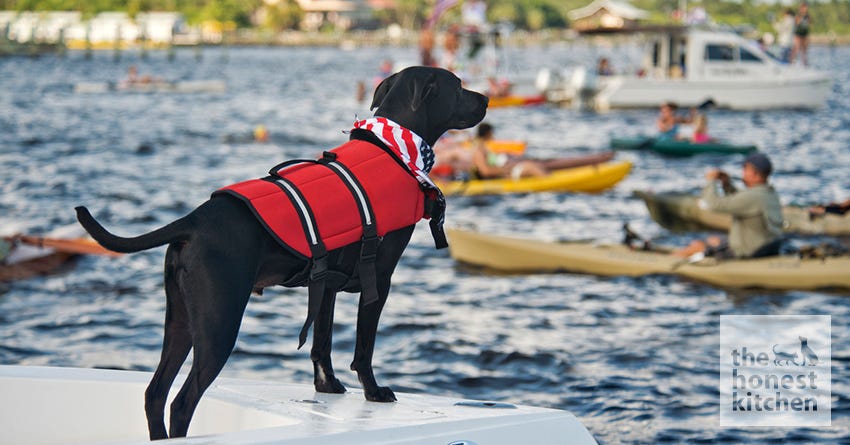Boating 101: Keeping Dogs Safe and Happy on the Water

Summer is the perfect time to introduce your dog to water.
But just because many dogs are naturally drawn to water doesn't mean you shouldn't take precautions, especially if you're going boating. Boats present their own challenges in an unfamiliar environment, which in turn increases the chance of accidents.Start Slow
Not all dogs like water and it's hard to tell where on the scale your dog falls unless you give it a try and check his reaction. “Owners who have grown up around the water think nothing of being aboard all day, but your dog can get sea sick,” says Peter Jensen Kurki, the Commodore of Business Development for Bennett Brothers Yachts in Wilmington, North Carolina. “It's best for first time boating to take a short ride and see how it goes—sea sickness sometimes won't appear until after 10 or 15 minutes.”Safety First
When stepping on and off the boat, make sure your dog does not try to jump onto the dock and accidentally miss—a very real possibility for smaller dogs. “It's best to carry the little ones and direct the larger breeds to exactly where to land,” says Jensen Kurki. “Floating docks will roll side to side and dogs might not anticipate the movement.” When dealing with salt water, you also have to worry about oyster beds and barnacles that could cut the soft pads on the dog's feet, according to Kurki. “Fresh water boating has its own set of issues, but salt growth on the docks, pilings, boat bottoms, and walkways can and will cut,” says Jensen Kurki. ©istockphoto/zinchik
©istockphoto/zinchik

